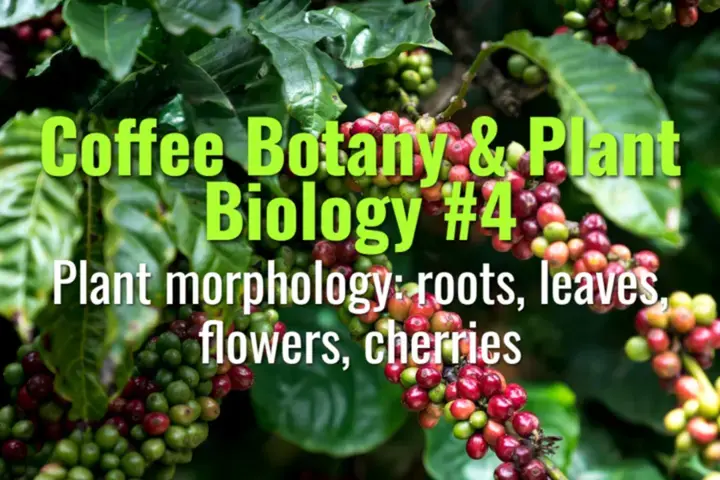Plant morphology: roots, leaves, flowers, cherries
This topic introduces the main structural features of the coffee plant—its roots, leaves, flowers, and cherries—and explains their roles in growth, reproduction, and quality of the final cup.
- Coffee Basics Nerds
- 2 min read
Article 4 of 12 in Coffee Botany & Plant Biology/

Root System
- Type: Coffee plants have a taproot system with lateral roots.
- Taproot: Penetrates deeply (up to 2–3 meters) in well-drained soils, anchoring the plant.
- Lateral roots: Spread horizontally near the surface, absorbing water and nutrients.
- Importance: Root health determines drought tolerance, nutrient uptake, and disease resistance.
Leaves
- Shape: Opposite arrangement, simple, elliptical leaves.
- Size: 6–12 cm long, 4–8 cm wide depending on species.
- Texture: Dark green, glossy upper surface; lighter underside.
- Function: Photosynthesis powerhouse, regulating growth and fruit production.
- Notes: Leaf size and texture differ among species (e.g., Arabica smaller and softer, Liberica very large and leathery).
Flowers
- Type: Small, white, star-shaped blossoms, similar to jasmine.
- Structure: Five petals, highly fragrant, clustered in leaf axils.
- Reproductive biology:
- Arabica is mostly self-pollinating.
- Robusta and Liberica are self-incompatible, requiring cross-pollination.
- Blooming: Triggered by rainfall after a dry spell; full bloom lasts only a few days.
- Symbolism: Coffee flowering marks the beginning of the crop cycle.
Cherries (Coffee Fruit)
- Development: Follows pollination and fertilization of flowers.
- Structure:
- Outer skin (exocarp), often red or yellow when ripe.
- Pulp (mesocarp)—sweet, mucilage-rich.
- Parchment layer (endocarp) protecting the seed.
- Silver skin (perisperm) clinging to the seed.
- Seeds (beans)—usually two per cherry, occasionally one (peaberry).
- Maturation: Typically 6–9 months for Arabica; up to 11 months for Robusta.
- Quality factors: Uniform ripening and proper cherry development are critical for specialty coffee quality.
Lasting Importance
- Roots anchor and nourish the plant.
- Leaves drive photosynthesis and overall plant vigor.
- Flowers mark reproductive cycles and yield potential.
- Cherries contain the beans that define global coffee culture.
Understanding morphology helps farmers, breeders, and roasters connect plant structure to both agronomic resilience and cup quality.